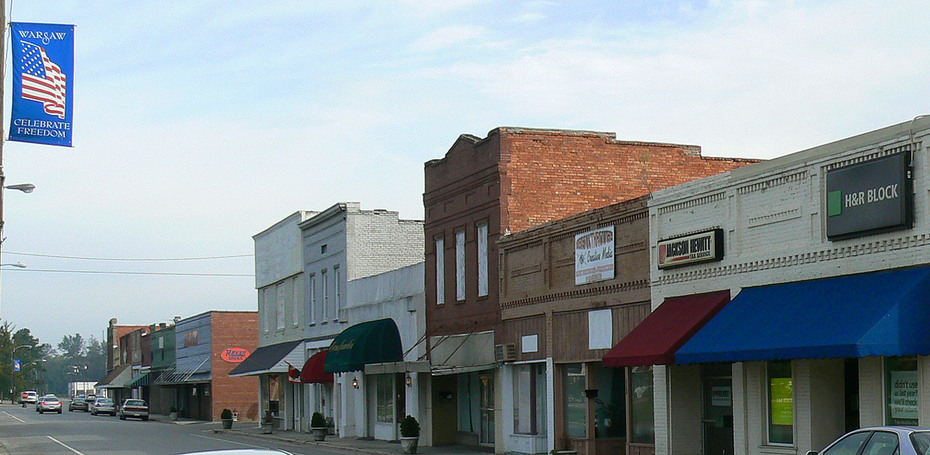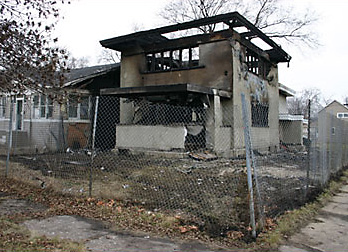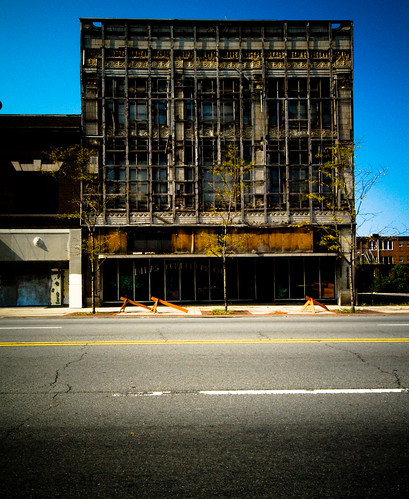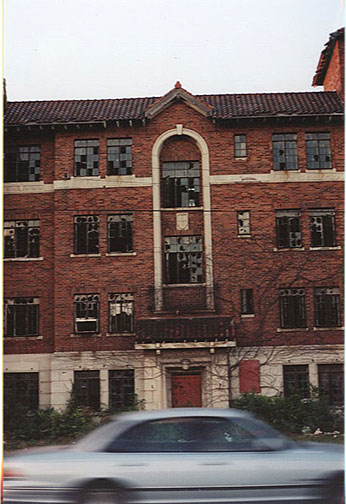|
|
Post by Bonobo on Apr 12, 2008 23:27:51 GMT 1
I wish, and hope, that some day, the U.S.A. will join this. mmmm, US joining us? What about double names of cities? Warsaw, for example? www.city-data.com/city/Warsaw-North-Carolina.htmlI have run into it by pure accident. I have a few questions concerning the statistics: They say: Estimated median household income in 2005: $23,000 (it was $23,358 in 2000)
North Carolina: $40,729Is it income per family or per head? Yes, I can see it clearly reads per household, but it is so too low to be true.  They say: Estimated median house/condo value in 2005: $70,900 (it was $65,800 in 2000)
North Carolina: $127,600 It is twice less than an average apartment in Krakow. Are such prices common in the USA or only in provincial places such as Warsaw? Oh, I saw a picture of Warsaw. Now I understand a lot.  |
|
|
|
Post by jeanne on Apr 13, 2008 2:15:08 GMT 1
North Carolina is still quite a rural state. Because houses cost so much less there than my area of the country, many people from the northeast are moving there. Many houses are being built. Pretty soon it won't be so affordable as it becomes more in demand.
|
|
|
|
Post by valpomike on Apr 13, 2008 3:12:46 GMT 1
We also have a Warsaw, here in Indiana, just around sixty some miles from my home.
|
|
|
|
Post by locopolaco on Apr 23, 2008 23:11:14 GMT 1
We also have a Warsaw, here in Indiana, just around sixty some miles from my home. yes and not one Pole in sight. lol it is a capital of sorts though.. body replacement parts, that is.  |
|
|
|
Post by Bonobo on May 1, 2008 12:42:00 GMT 1
We also have a Warsaw, here in Indiana, just around sixty some miles from my home. yes and not one Pole in sight. lol it is a capital of sorts though.. body replacement parts, that is.  Cars are cannibalised for spare parts there? |
|
|
|
Post by locopolaco on May 1, 2008 17:58:30 GMT 1
not car parts but knee of elbow or other human body replacement parts.
|
|
|
|
Post by Bonobo on May 18, 2008 21:20:35 GMT 1
not car parts but knee of elbow or other human body replacement parts. I still don`t understand.. |
|
|
|
Post by valpomike on May 18, 2008 21:33:17 GMT 1
Hi,
We also have a Warsaw, in Indiana, less than a hundred miles from our home. I have a cousin living near it.
|
|
|
|
Post by locopolaco on May 19, 2008 3:22:24 GMT 1
|
|
|
|
Post by Bonobo on Oct 29, 2008 20:32:46 GMT 1
You don't know a bad looking city. On your next trip here, to the U.S.A. I will take you on a trip to Gary, Indiana, and you will see a bad looking city, one that was great at one time. Mike You did not answer, will you, or anyone want to go with me on my tour of Gary, Indiana. A place where many great Polish came to live after leaving Poland. Mike Mike, are you inviting us to Gary? Yes, I can see it isn`t too nice.     Abandoned church www.cityeyesphoto.com/blog/wp-content/uploads/2008/02/dsc-0045-12.jpg |
|
|
|
Post by valpomike on Oct 29, 2008 22:30:53 GMT 1
Those are not the bad places, where they sell drugs, and have hookers on the streets, and drive by shootings.
Mike
|
|
|
|
Post by Bonobo on May 6, 2009 16:47:54 GMT 1
|
|
|
|
Post by locopolaco on May 6, 2009 20:35:54 GMT 1
|
|
|
|
Post by Bonobo on May 6, 2009 21:07:55 GMT 1
|
|
|
|
Post by valpomike on May 7, 2009 3:44:20 GMT 1
That was just one of the many reasons. Another was crime, and bad politicians, inter city getting ruined down, and not being repaired. There must be many more.
Mike
|
|
|
|
Post by valpomike on May 7, 2009 3:45:47 GMT 1
Another great city that this happened to was Gary, Indiana.
I saw this happen, and it looked like no one cared.
Mike
|
|
|
|
Post by locopolaco on May 7, 2009 16:01:01 GMT 1
yeah, mainly due to economic reasons.. Detroit has been in decline for 30 or maybe even 40 years though. Similar thing has been happening in Gary In, Pittsburgh, Cleveland, Toledo, Buffalo over the last couple of decades; since the heavy manufacturing (steel) has been moving to other countries. cand yes, crime is very high in all those areas but that's more of a result not the cause. |
|
|
|
Post by valpomike on May 7, 2009 18:19:45 GMT 1
In Gary, Indiana was most of the cause for people leaving, I know I was one of them.
The steel mills just don't have work, since there sales are down.
Mike
|
|
|
|
Post by Bonobo on May 7, 2009 21:32:28 GMT 1
In Gary, Indiana was most of the cause for people leaving, I know I was one of them. The steel mills just don't have work, since there sales are down. Mike When I worked as a demolition worker on NYC subway in 1990, I saw sth that amazed me: some iron-cast elements for a new construction bore the name of Steel Mills in Krakow. They had been imported by the American company because they were cheaper. |
|
gigi
Kindergarten kid
  
Posts: 1,470
|
Post by gigi on May 7, 2009 21:56:11 GMT 1
When I worked as a demolition worker on NYC subway in 1990, I saw sth that amazed me: some iron-cast elements for a new construction bore the name of Steel Mills in Krakow. They had been imported by the American company because they were cheaper. Waiter...health care worker...demolition worker - exactly how many jobs did you have when you were in NYC? |
|
|
|
Post by Bonobo on May 7, 2009 22:26:49 GMT 1
When I worked as a demolition worker on NYC subway in 1990, I saw sth that amazed me: some iron-cast elements for a new construction bore the name of Steel Mills in Krakow. They had been imported by the American company because they were cheaper. Waiter...health care worker...demolition worker - exactly how many jobs did you have when you were in NYC? You have a good memory. First I was a waiter in a Polish catering restaurant. Then I worked a few weeks or nights in lunchenettes around New York, posh and simple. I lost all these positions because I wasn`t a good waiter- not condescending enough to customers. ;D ;D ;D Then I worked a few weeks in an Italian demolition company (mafia, I suppose, not afraid to hire illegal workers), we pulled down an old subway station. But it was too hard work for me, the sledgehammer gave me too strong vibration. ;D ;D ;D ;D Meanwhile I worked a few days as a nurse`s aid in day-care home for old people. Earlier I had passed two exams: written and practical. I gave up because it was too stressing, all those old people left by their familes and craving attention and the cold way they were treated by the staff, reminded me of One Flight Over Cuckoo`s Nest. I was too delicate for such things. Finally I landed in a Jewish shop in Williamsburg, NYC, that made metal fire doors. It was my most stable position while in NY and those Jews were really very OK. |
|
|
|
Post by valpomike on May 8, 2009 4:12:05 GMT 1
One of the reasons that Polish steel was cheaper, was the American unions.
Also, we, in the past, shipped our steel all over the world.
I also know I see many Ford cars in Poland, each time I am there.
I don't think they make them there, do they?
Mike
|
|
|
|
Post by locopolaco on May 8, 2009 17:12:44 GMT 1
One of the reasons that Polish steel was cheaper, was the American unions. Also, we, in the past, shipped our steel all over the world. I also know I see many Ford cars in Poland, each time I am there. I don't think they make them there, do they? Mike they are made somewhere in europe.. not shipped from here. |
|
|
|
Post by Bonobo on May 8, 2009 21:43:15 GMT 1
One of the reasons that Polish steel was cheaper, was the American unions. Also, we, in the past, shipped our steel all over the world. I also know I see many Ford cars in Poland, each time I am there. I don't think they make them there, do they? Mike they are made somewhere in europe.. not shipped from here. Ford has a branch in Germany. It is an independent division with many own designs destined for European market. en.wikipedia.org/wiki/Ford_Europe |
|
|
|
Post by valpomike on May 8, 2009 22:15:00 GMT 1
Ford is still a American owned car, made all over the world, but still owned my Americans.
And in the past, I visited our port that ships steel, out, and all over the world, but the unions have raised the price so high, it is hard to sell, even with it's being better.
Mike
|
|
|
|
Post by Bonobo on May 8, 2009 22:41:56 GMT 1
Ford is still a American owned car, made all over the world, but still owned my Americans. And in the past, I visited our port that ships steel, out, and all over the world, but the unions have raised the price so high, it is hard to sell, even with it's being better. Mike Mike, that is the so called post-industrial stage of development. Heavy industry is replaced by high-technology and specialised services. Poor countries are still in industrial phase and are destined to produce such crude staples as steel or fuels. |
|
|
|
Post by Bonobo on May 19, 2009 19:26:25 GMT 1
This area in Rochester once used to be inhabitted by Polish Ams. Vacant homes turning Rochester into urban ghost town
Alan Morrell and Steve Orr
Rochester Democrat and Chronicle
May 7, 2009

Richard Craven has lived on Reed Park for six years, in the 11th-emptiest neighborhood in the state. The building to the left and the building over his shoulder to the right are both among the vacant buildings.
Richard Craven has lived on Reed Park for six years, in
the 11th-emptiest neighborhood in the state. The building
to the left and the building over his shoulder to the right
are both among the vacant buildings.
Richard Craven's yard overlooks three vacant lots, a burned-out house and another house where every window that isn't boarded up is broken.
Craven is not surprised that his census tract is the emptiest in Monroe County and one of the emptiest in New York state. He's determined to make it better, but said it's not easy.
"I'm not moving anywhere," said Craven, 57, who lives on Reed Park in northeast Rochester.
"A lot of people are trying to fix up their properties. But when you've got a house like that," he said, pointing to the fire-damaged house that he said has been that way for more than six years, "it's a rat's nest. That makes it look dirty. I'm constantly running kids out of there. They don't know how dangerous it can be."
In Rochester, there are eight census tracts in which at least 20 percent of the homes are v acant, according to a Democrat and Chronicle analysis of data collected by the U.S. Postal Service and the federal Department of Housing and Urban Development.
About 2,900 residential structures were vacant in Rochester last year, including about 1,800 single-family houses, according to city officials. The vacant structures account for 6,752 vacant housing units, according to the data from HUD.
In suburban Monroe County, the highest vacancy rate was 9.7 percent, found in a census tract in the southwest corner of Penfield that consists largely of mobile home parks and several apartment buildings.
A tract with only a few dozen residences in Chili near the Greater Rochester International Airport was next with a 6 percent vacancy rate, followed by three census tracts that had rates of about 3.5 percent. They were located in eastern Greece, west Brighton and the eastern half of the village of Fairport.
Combined, suburban neighborhoods had a residential vacancy rate of less than 1 percent, compared to just more than 7 percent for city neighborhoods.
Craven's tract is the 11th-emptiest in New York state, according to the data. Buffalo had four such tracts in the top eight, including three with a vacancy rate of 30 percent or more.
A quarter of the houses in Craven's tract are unoccupied, according to government statistics. The siding on one home near Craven's is broken and falling off, with wooden steps that have collapsed. More than half of the roof is gone from the burned-out home, and a dandelion-covered field is all that remains from where a demolished home once stood.
Craven complained about what he called shoddy work by road crews and about damage to his fence that he said was caused by a sidewalk plow. He said residents are interested in fixing the neighborhood, but said they're getting discouraged.
"They're going to lose faith if the city doesn't step up," he said.
An uphill battle
The city has been demolishing vacant homes for years and has budgeted $3 million to raze about 250 homes this year. Other strategies the city has tried to eliminate the vacancies include rehabilitating vacant homes and selling them to first-time home buyers at reduced prices, selling vacant lots to owners of adjoining properties for $1, and selling tax liens for foreclosed property to a private firm. As with other parts of the country, the number of properties with foreclosure filings in the greater Rochester area has exploded in recent years — more than doubling from 1,501 in 2006 to 3,404 in 2007, and increasing again last year to 3,825.
"We can't claim success," Bret G arwood, director of the city's housing and project development bureau, said of the vacant house problem.
The declining population in Rochester is the biggest issue. And many of the available city homes are Cape Cods and others styles not popular with shoppers, Garwood said. The number of owner-occupied homes in the city also continues to drop, from 44 percent in 1990 to 40 percent in 2000, Garwood said.
'Knock them all down'
In another Rochester neighborhood, Kathy Bostic pointed out a vacant home where she said homeless people gather. Two businesses at the nearest intersection are boarded up, as are two houses around the corner.
"The way I feel, they need to knock them all down," said Bostic, who lives in the census tract that includes the Jay-Orchard streets area, where 24 percent of the housing units are vacant. "I don't like it here. The environment is bad."
Jennifer Leonard, director of the Washington, D.C.-based National Vacant Properties Campaign, said some cities have undertaken the practice of "land banking" to deal with empty homes. Under that practice, municipalities purchase a property, maintain it and eventually sell it to a developer.
The city of Baltimore, for example, targeted about 5,000 homes through that process, mainly through tax foreclosures, she said. B ut municipalities aren't crazy about the idea.
"Cities don't have the capacity to be in the landlord business," Leonard said. "If you're in a market that's very weak or not functioning, like Detroit or Flint, Mich., you're talking about holding on to the property for 30 or 40 years, not just down the road."
In Rochester, the wait might be two or three years, she said. The city owns about 600 vacant homes, Garwood said, including 97 available for sale and 359 awaiting demolition.
Waiting for results can be exasperating, said Delaine Cook-Green, executive director of the Coalition of North East Associations, an organization based down the street from Craven's home. She said city crews responded a few weeks ago when the porch of a vacant Henry Street home collapsed. The home, still standing, has been vacant for more than four years, she said.
"It's an eyesore," Cook-Green said. "To me, that's not showing any respect to the community, by leaving that house there."
Residents on Henry Street have planted flowers the past five years to try to beautify the neighborhood, she said. But the empty, blighted homes and lots overshadow their efforts.
"Most people have said, you might as well give up," she said. "Other people say, things are changing, don't give up. But how can you not giv e up, when you go outside and see that?"

A quarter of the houses on Reed Park are vacant. About 2,900 city houses were vacant last year. |
|